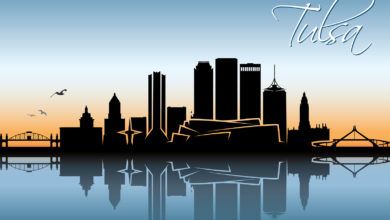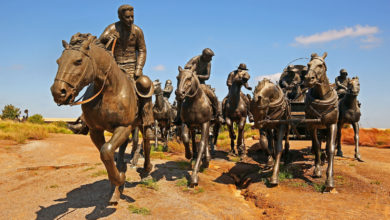Sooner or Later, You’ll See How Interesting It Is
We bet you didn't know all of these 7 things about this state
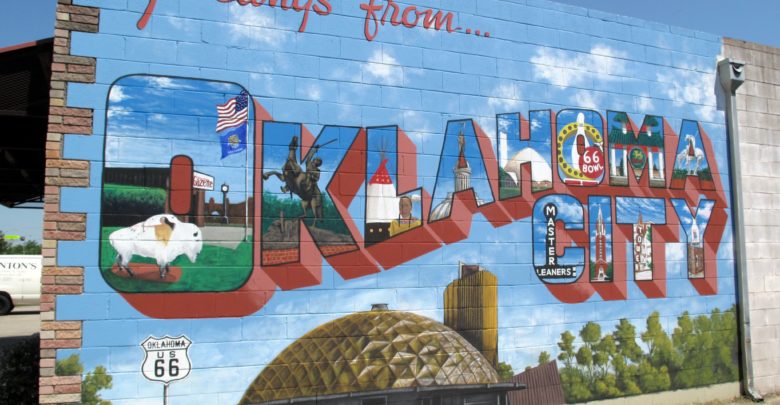
Much of Oklahoma’s land was acquired during the Louisiana Purchase in 1803, though the U.S. government did not open the land to settlers until 1889. After 86 years of waiting, many of those looking to lay down roots proved to be overeager when staking their claims, entering the land prematurely. These “Sooners”, as they would come to be known, would unwittingly help coin the state’s official nickname, as well as that of the University of Oklahoma’s popular football team. Here are seven more interesting facts about The Sooner State.

1. The Shopping Cart Was Invented Here
Today, handheld shopping baskets are a convenient alternative to cumbersome carts when consumers are looking to make a quick grocery run. Years ago, however, they were the only option when stocking up on the essentials. That is until Sylvan Goldman introduced the first shopping cart on June 4th, 1937 in Oklahoma City. As the owner of a chain of Humpty Dumpty supermarkets, Goldman set out to devise a way for his customers to load up on more groceries. With the aid of mechanic Fred Young, the innovative entrepreneur constructed the first prototype using a wooden folding chair as inspiration. The cart featured a pair of baskets atop a metal frame that ran on four wheels. Though it was heavily promoted as a tool to help improve the shopping experience, the invention initially struggled to catch on with consumers. Eventually, the masses began to embrace the benefits of the cart, turning Goldman into a multimillionaire from the royalties collected on his design.

2. It’s Home to an Annual Bigfoot Festival
The unincorporated community of Honobia serves as the site of a yearly Bigfoot Festival, welcoming curious onlookers hoping to catch a glimpse of the elusive creature. Back in the year 2000, a family living on a rural homestead near the town reported several sightings of the beast (or beasts), claiming it had stolen deer meet and even tried to force its way into the home. The event has come to be known as “The Siege at Honobia”. Though these claims have not been substantiated, this hasn’t stopped the remote community from capitalizing on the purported incidents. The Bigfoot Festival is held annually on the first Friday and Saturday of October, and features a lineup of distinguished speakers, a 5k run, and even scholarships donated to local schools. Visitors to the area should be prepared to unplug, as modern amenities such as Wi-Fi and cell service are not available.
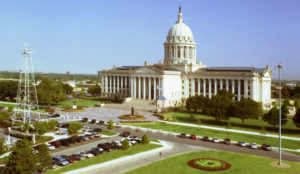
3. Its State Capitol Is Built Atop an Oil Well
Constructed directly above the Oklahoma City Oil Field, the “Capitol Campus” – which consists of the Oklahoma Judicial Center, Oklahoma History Center, Oklahoma Governor’s Mansion, and the State Capitol Park – unsurprisingly remains the only capitol in the country to boast this unique distinction. The oil field itself has been in operation since 1928, just over a decade after completion of the capitol building, and covers more than 30 square miles. As of 2015, the Petunia oil well was the final remaining oil-producing well on capitol grounds.
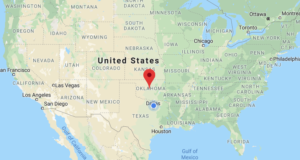
4. Oklahoma City Is Pretty Much the Center of the Country
Oklahoma’s capitol city is located equidistant from Los Angeles and New York City, the two most populous metropolitan areas in the country. At roughly 1200 miles from each of these iconic coastal communities, a flight from Oklahoma City would last approximately three hours and fifteen minutes in either direction. Conversely, the driving routes to these destinations do offer a bit more of a discrepancy, as a trip from Oklahoma City to Los Angeles by car would cover more than 1300 miles (and last 19½ hours), while the drive to New York would tack on another 100+ miles and an additional three hours to the trek. However, for anyone with frequent business on either coast, they couldn’t ask for a better home hub than Oklahoma City.
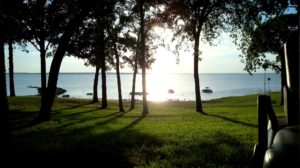
5. It Has More Manmade Lakes Than Any Other State
With more than 200 manmade lakes, Oklahoma tops every other state for total number of reservoirs. That’s not to suggest that each of these lakes were dug out by hand or even machine. The vast majority of these pools were created by damming. While its 200 manmade lakes may be the most of any state, Oklahoma also does still feature many natural lakes as well, in the form of oxbow and playa lakes. However, its largest lakes are manmade, with Lake Texoma taking the crown. In fact, at over 2.6 million acres, it is one of the largest reservoirs in the country. Even though Lake Texoma does also stretch across the border into Texas, the majority of it remains on the Oklahoma side of the border.

6. It’s Tornado Alley
The term “Tornado Alley” generally refers to the area of the central United States where tornadoes are most frequently detected, from Texas up to Canada and parts of the Midwest. The center of this meteorological activity, however, can be traced to Oklahoma, Kansas, and northern Texas. While Texas may experience more tornadoes on average than Oklahoma (126 to 52), the Lone Star State also encompasses 200,000 square miles more than its neighbor to the north. And what Oklahoma lacks in quantity, it makes up for in sheer power, as it is site of the highest number of strong tornadoes relative to its surface area. Oklahoma is so closely associated with tornado activity that it served as the setting for the definitive tornado movie Twister, which centers around a group of storm chasers on the hunt for some truly unwieldy weather.
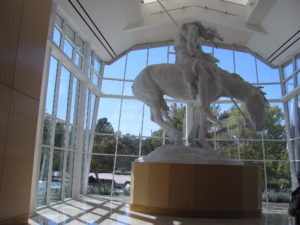
It’s Home to the National Cowboy Hall of Fame
Located in Oklahoma City, The National Cowboy Hall of Fame & Western Heritage Museum has been proudly preserving Western and American Indian art and artifacts since 1955. Its galleries display the works of artists such as Frederic Remington, W.R. Leigh, and Albert Bierstadt as well as many prominent Native American artists, while current exhibits include Colors of Clay and Layered Stories – which celebrate ceramics and America’s Canyonlands, respectively. Also among the more than 28,000 pieces in the museum’s collection are rodeo memorabilia and historic American firearms.

